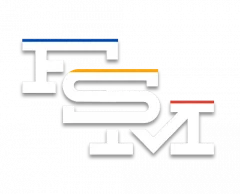A couple of weeks ago , FSMdotCOM showed you how to manually backup your iPhone . You can learn how to backup everything you need, from contacts to visual voicemail to videos from 3rd party recorders. But what happens if you iPhone gets bricked, or you restore it w/o any backup or any other similar situation where you loose precious data?
That could be the end of your world…trust me, literally !!! Well, not necessarily. Depending on what you need to recover and your computer skills here are two methods which you can use to recover your data. First method is pretty advanced and dont think that is accessible to everybody. Second method is a much more simpler one, is actually a software you can use to recover your data. But since is a simpler one, that means that is not as complex as the first one, and your recovery capabilities are limited. Still a life saving method.
Don’t be discouraged if you dont understand the first method , really please dont be. If you are interested or maybe passionate , you can use the second method and recover your ass , than you can explore the first method. My advice is to “explore” it on an extra device (if you have one) not your primary iPhone, because you will end up like this :
- you keep on trying and trying and you dont succeed and a vein will pop
- you wipe out your device
Method 1
What you’ll need:
- Jailbroken device
- BSD Subsystem and OpenSSH installed on your iPhone
- Terminal (or MobileTerminal) installed on your iPhone
- An SSH server installed on your computer
- The ‘DD’ utility installed on your computer (this should be pre-installed on most Linux systems) ( read more about it here )
- Your iPhone’s IP address
- Your computer’s IP address
First, make sure that your iPhone and computer are on the same LAN. You can try to ping your computer from your iPhone (using Terminal) and vice versa, just to make sure they can see each other on your LAN. For example: ping 192.168.x.xxx
Next, you’ll want to make sure that you can SSH into your computer from the iPhone. To do that, open Terminal on the iPhone and enter: ssh <username>@<computer-ip>
Where:
- <username> is Your user name on the computer.
- <computer-ip> is Your computer’s IP address on the LAN.
If that worked, you should be prompted to enter a password for . If the connection times out, then you need to make sure that you have the SSH server running on your computer and make sure that port 22 (the default SSH port) isn’t being blocked by your router’s firewall.
Once you know that your iPhone and the computer are talking to each other, open Terminal on the iPhone and run the following command to begin transferring the iPhone’s “disk” image to your computer (be sure to run this as root using ‘su’):
NOTE: Make certain that your iPhone’s screen lock is disabled first. If the screen lock comes on, it will kill the SSH connection. Also, you’ll want to connect your iPhone to its charger. This transfer can take a while.
dd if=/dev/disk0 | ssh @ ‘dd of=iphone-dump.img’
The above command will create a “disk” image of your iPhone (named “iphone-dump.img”) on your computer. Feel free to use a different name or a different destination directory. For example: ‘dd of=/home/username/iphone-dump.img’.
Also, be sure that you don’t mix up the if (input-file) and of (output-file) in the command above. Doing so could wipe-out your iPhone.
thx lmarr28
Method 2
As i told you above, this is a software that you can use to recover your data.iPhone Backup Extractor is an easy-to-use program to extract files from an iPhone, iPod Touch, iPhone 3G or iPhone 3G s iTunes backup. It is useful for restoring AppStore applications, SMS histories, contact lists, call histories, photographs and other data that might otherwise be inaccessible. On Windows, the registered version can automatically convert the extracted Apple databases into CSV format, so they can be easily imported into Excel, Outlook, or Webmail.
The backup extractor is free for non-commercial use, although registered users enjoy a number of benefits including faster restores, restoration of multiple files at a time, and automatic export to CSV (Windows only). Commercial (ie. business users) users must register.
iPhone Backup Extractor is a cross-platform software , meaning it will work on OSX, Windows and Linux.

